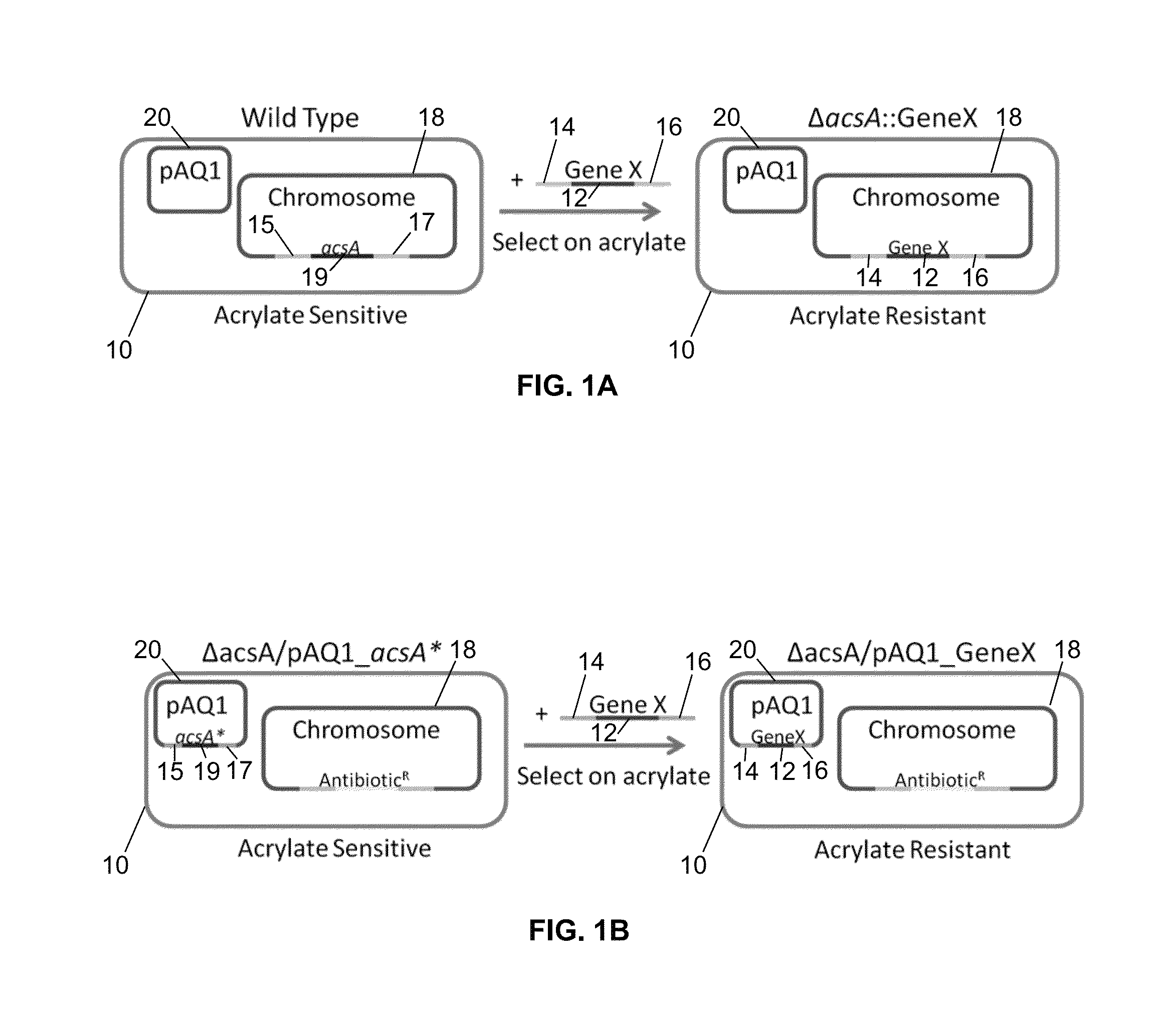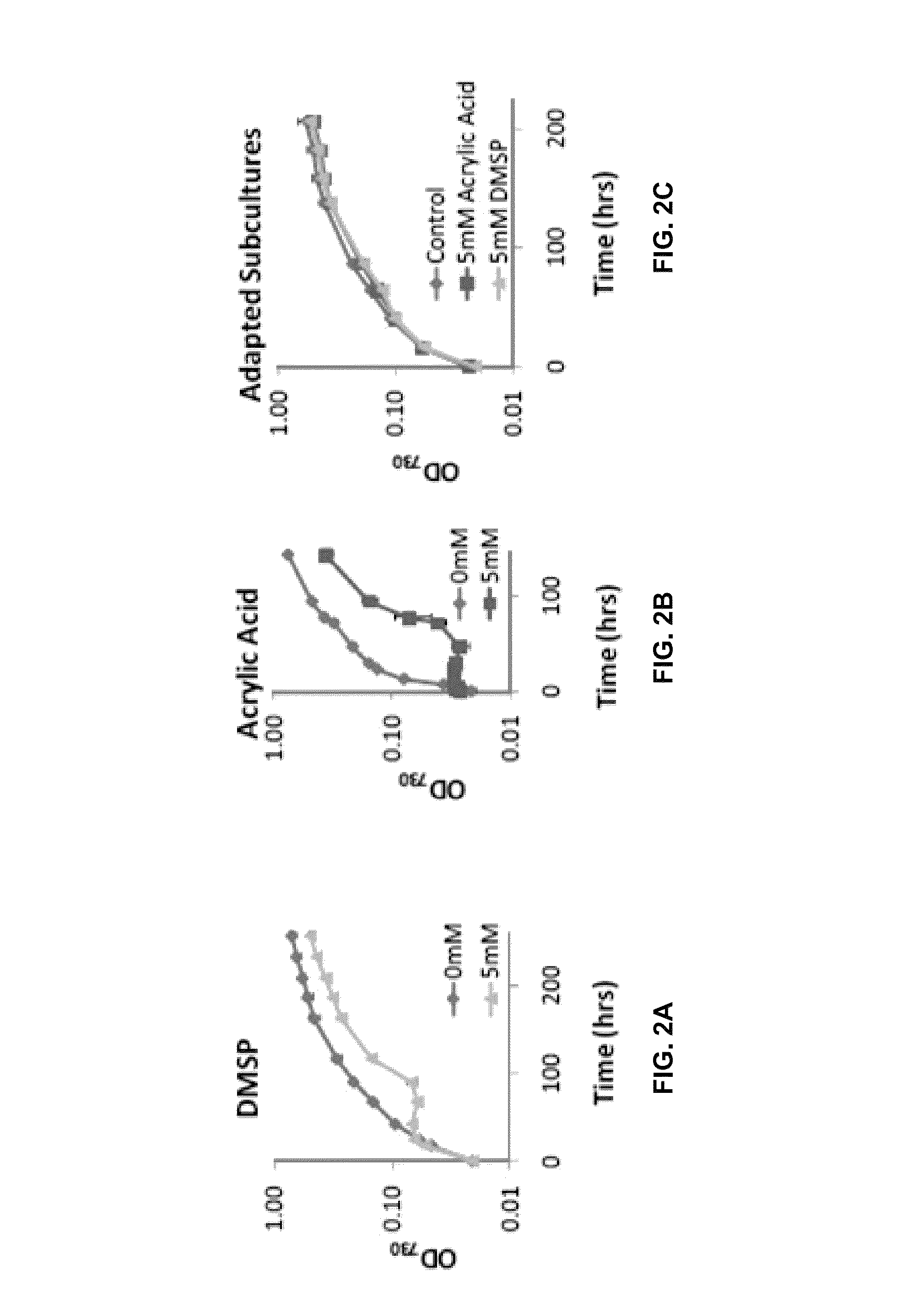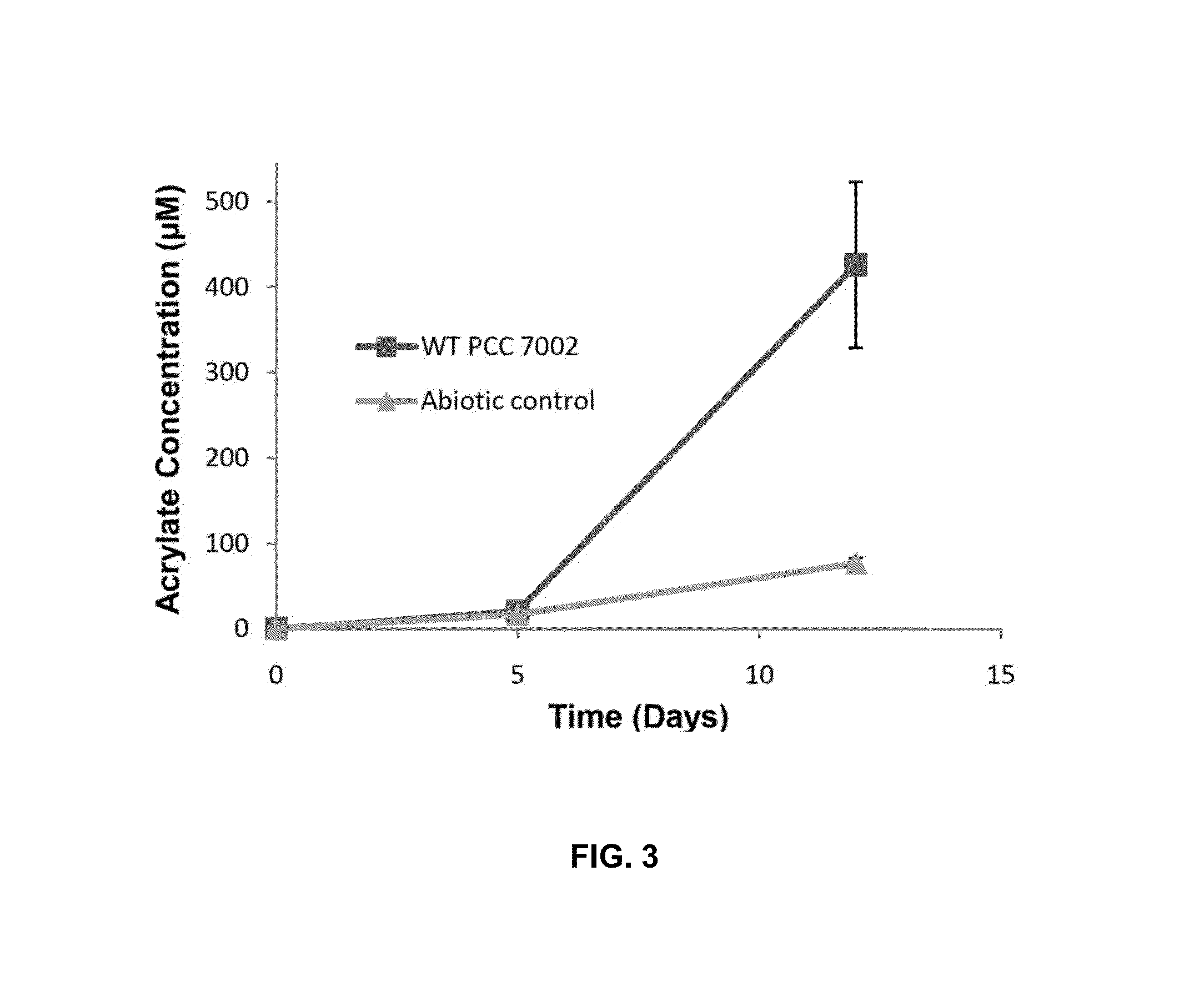Organic acid-tolerant microorganisms and uses thereof for producing organic acids
a technology of organic acids and microorganisms, which is applied in the field of organic acid-tolerant microorganisms, can solve the problems of many, including 3hp, being toxic to the microorganisms capable of producing, and the availability of carbon and energy sources such as food-based commodities and/or sugars derived from lignocellulosic biomass, so as to reduce background mutation frequency and inhibit cell harboring. growth
- Summary
- Abstract
- Description
- Claims
- Application Information
AI Technical Summary
Benefits of technology
Problems solved by technology
Method used
Image
Examples
example 1
Acrylic Acid is Produced from Incubation of DMSP with PCC 7002
[0101]Metabolism of DMSP can result in the accumulation of several metabolites, including acrylic acid and 3HP, and may alter growth patterns due to its use as a carbon and sulfur source. PCC 7002 was cultured in the presence of 5 mM DMSP and analyzed for the presence of acrylic acid and 3HP. Growth was determined by monitoring OD730 while metabolic byproducts were measured through high pressure liquid chromatography (HPLC) and gas chromatography (GC). During incubation with DMSP, an increase in OD730 similar to a control culture was observed for several doubling events, followed by a delay in increased OD730 (FIG. 2A). HPLC analysis determined that during the initial growth period acrylic acid was being produced, although not at a rate significantly beyond an abiotic control (FIG. 3). However, extended incubation of PCC 7002 with DMSP resulted in an increase in acrylic acid concentrations beyond the abiotic control (FIG....
example 2
Acrylic Acid and 3HP Cause Toxicity at Low Concentrations
[0102]Accumulation of organic acid anions in the cytoplasm of bacteria has been shown to block metabolic pathways and arrest growth [32,33]. In addition to blocking metabolic pathways, high concentrations of organic acids have been shown to reduce the proton motive force through dissociation across the membrane [34]. Because of this, the toxicity of organic acids generally increases with the hydrophobicity of the compound [35]. The minimum inhibitory concentrations (MIC) for PCC 7002, Synechococcus sp. PCC 7942, and Synechocystis sp. PCC 6803 were determined for acrylic acid, 3HP, and propionic acid at a pH of about 8 (Table 1). In all three species, acrylic acid was significantly more toxic than propionic acid, which was more toxic than 3HP. Furthermore, the toxicity of acrylic acid (pKa 4.35) to PCC 7002 was shown to be pH dependent, with toxicity increasing with decreasing pH. The low MIC for acrylic acid explains why cultu...
example 3
A Mutation in an Acetyl-CoA Ligase Gene Increases Tolerance to Acrylic Acid and 3HP
[0104]When a dense culture of PCC 7002 was plated onto solid medium containing acrylic acid, colonies resulting from spontaneous mutants uninhibited by acrylic acid were observed. The mutation frequency when selecting for growth on 50 μM acrylic acid was 7×10−6. When selecting for growth on 5 mM acrylic acid, the mutation frequency was 4×10−6. The mutation frequency is the frequency that a mutant with a given phenotype is found within the population of a culture. For example a mutation frequency of 1×10−6 suggests that in a population of 1×108 cells, there are 100 mutants. The observed mutation frequencies are suggestive of a loss of function mutation. All mutants obtained from medium containing 50 μM acrylic acid were able to grow on 5 mM acrylic acid. In addition, these colonies were able to grow in media containing concentrations of propionic acid and 3HP that were above the WT PCC 7002 MIC values....
PUM
| Property | Measurement | Unit |
|---|---|---|
| Molar density | aaaaa | aaaaa |
| Molar density | aaaaa | aaaaa |
| Molar density | aaaaa | aaaaa |
Abstract
Description
Claims
Application Information
 Login to View More
Login to View More - R&D
- Intellectual Property
- Life Sciences
- Materials
- Tech Scout
- Unparalleled Data Quality
- Higher Quality Content
- 60% Fewer Hallucinations
Browse by: Latest US Patents, China's latest patents, Technical Efficacy Thesaurus, Application Domain, Technology Topic, Popular Technical Reports.
© 2025 PatSnap. All rights reserved.Legal|Privacy policy|Modern Slavery Act Transparency Statement|Sitemap|About US| Contact US: help@patsnap.com



